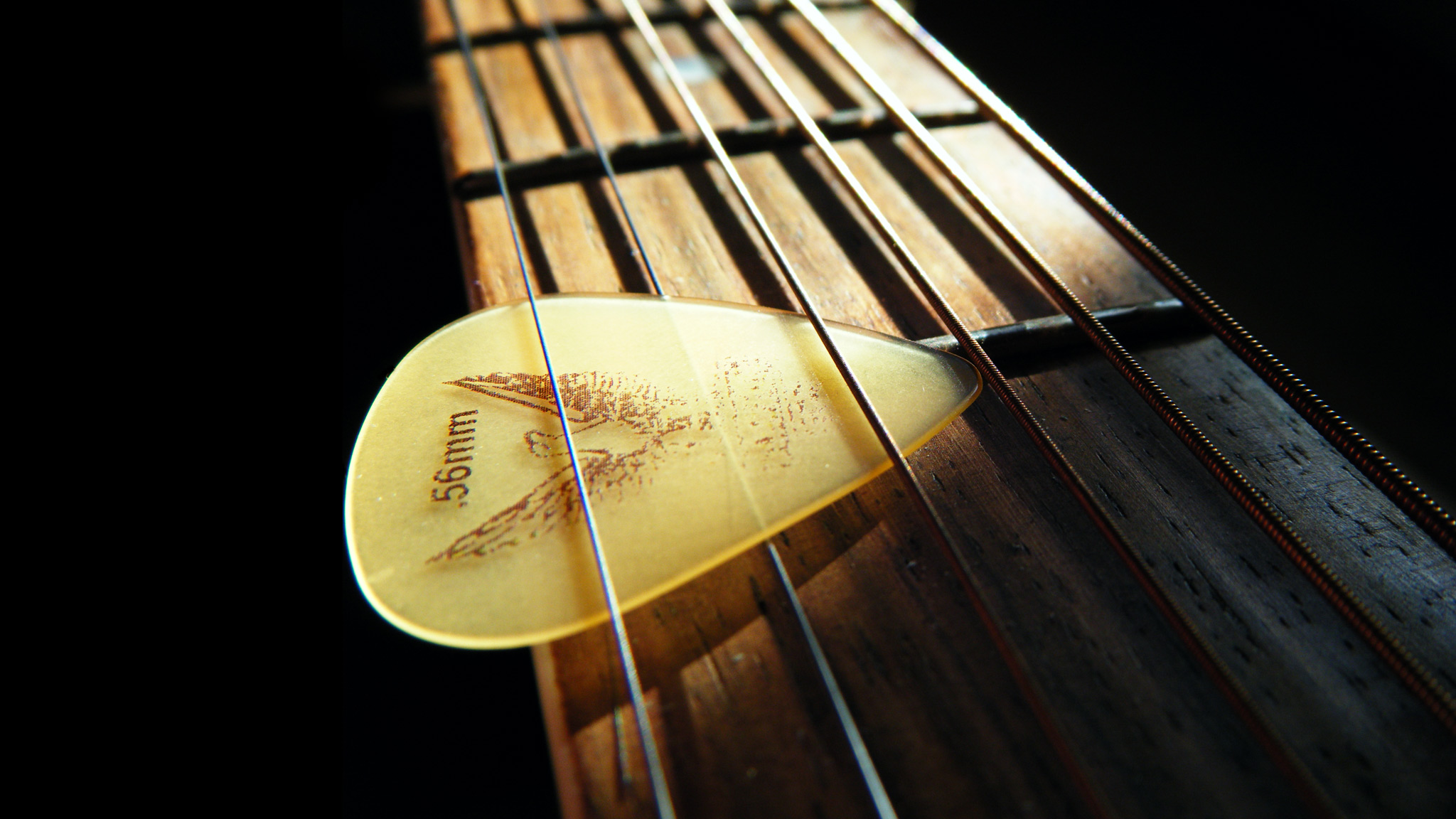Quick: Name the notes across the 8th fret, from low E string to high E. Include sharps and flats. Ready. Go! One one thousand…two one thousand…If you cannot rapid fire the answers without having to think, there could be some confusion in your guitar playing. Having to take time to think about the names of the notes you are looking for adds an extra step to your thought process, slowing all of your playing down.
Developing the ability to quickly recall notes anywhere on the fretboard, will make all aspects of your guitar playing better including: finding chord tones when improvising, sight reading or finding barre chords up and down the neck.
By the way, the correct answers for the 8th fret from low E to high E string are: C, F, A#/Bb, D#/Eb, G, C.
5 MINUTES A DAY AND 6 EASY LESSONS
There are 6 exercises to complete in order. Each exercise builds on the previous one. The first two exercises focus on learning to instantly recall where all natural notes lie on the fretboard. Once this is mastered, notes with sharps and flats are found in relation to natural notes-either a fret up or down. We are not going to be thinking of every fret on the neck chromatically. It is far too cumbersome to think: A, A#/Bb, B, C, C#/Db, etc.
Practice each exercise until you achieve mastery. Once you do not need to look at the guitar to name notes, without hesitation and can complete all exercises with 100% accuracy you have succeeded.
Plan to spend five minutes (or less) per practice session. These exercises were designed to speed up the learning process with a minimal amount of time investment. Pep talk over – Let’s get started!
APPROACH:
Use the exact syntax described below. Repeat the exact same process over and over again so this will quickly be internalized. Commit to being 100% correct. Proceed at a pace where you can easily think about the name of the next note before saying it. As I say to my students “Your Brain Must Be Ahead of Your Fingers at all Times.”
EXERCISES:
- Name Natural Notes Up & Down Each String. Begin with the open 6th string and continue to the 1st. The syntax for you to say (to yourself or out loud) is:
- “I am on note X, the next note is Y, it is a half or whole step away.” Then play the note.
- I know this may seem to be overkill. If you repeat this every time your results will come quickly.
- Example using the 3rd string G. Say the following:
- The string is G, the next note is A, it is a whole step away, play A on second fret, third string. Go on to the next note.
- The note is A, the next is B, it is a whole step away, play B on the fourth fret, third string, etc. See diagram below for full example.
- When you arrive at the 12th fret you should be naming the same letter as the open string – an octave higher. If not, something has gone wrong.
- After naming notes up to the 12th fret, name them backwards down to the open string. This may be a bit more challenging.
- Use any left hand fingering you want. We are just identifying notes on the fretboard, not scale patterns etc.
- Pick A Letter, Find it on Every String
- Pick any letter A-G. It does not matter which you choose.
- Proceed as in exercise 1, using the same syntax. Once you arrive at the note you have chosen on each string, go on to the next string and find the same note letter. It may be an octave higher. Proceed until you have found the note on all strings.
- See Example for F on every string.
- Pick A Letter, Find on Every String: Add Sharps and Flats
- Same as exercise two, just pick a sharp of flat (# or b)
- Find the natural note first, then adjust up or down for the sharp or flat.
- Sharp Example, G# on the 6th String: Name notes using the syntax until you reach G (third fret, sixth string.) The sharp adds an extra half step so move up an additional half step to G# (fourth fret, sixth string.)
- Flat Example, Bb on the 6th String: Name notes using the syntax until you reach B (seventh fret, sixth string.) The flat lowers a note a half step so move down a fret to Bb (sixth fret, sixth string.) See Example below of G# and Bb.
- Be aware of “enharmonic equivalents.” For example: G# and Ab are on the same fret. If you are unfamiliar, this is normal.
- Pick A Fret, 1-4th Fret, Name Notes Across Each Fret. (Pick one per practice session).
- a.Name notes from the open string up to the fret you have chosen. By this time, naming sharps and flats should be easy. Just make sure to name both the sharp and flat note when necessary. See example of notes across 5th fret.
- Pick A Fret, 5-8th Fret, Name Notes Across. (Pick one per practice session).
- Pick A Fret, 9-12th Fret, Name Notes Across. (Pick one per practice session).
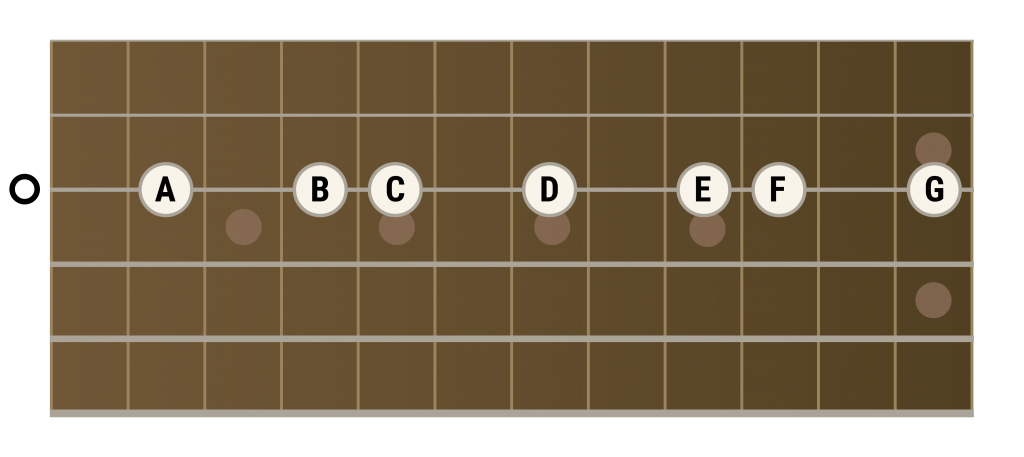
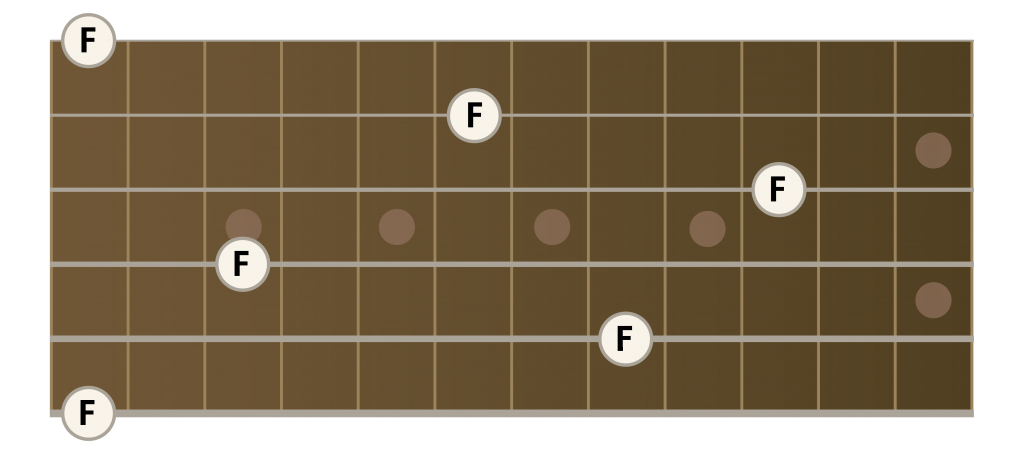
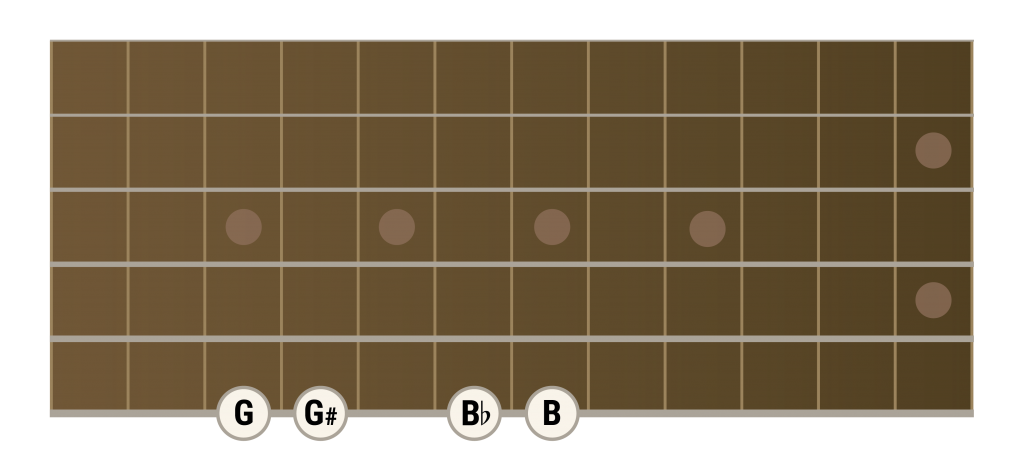
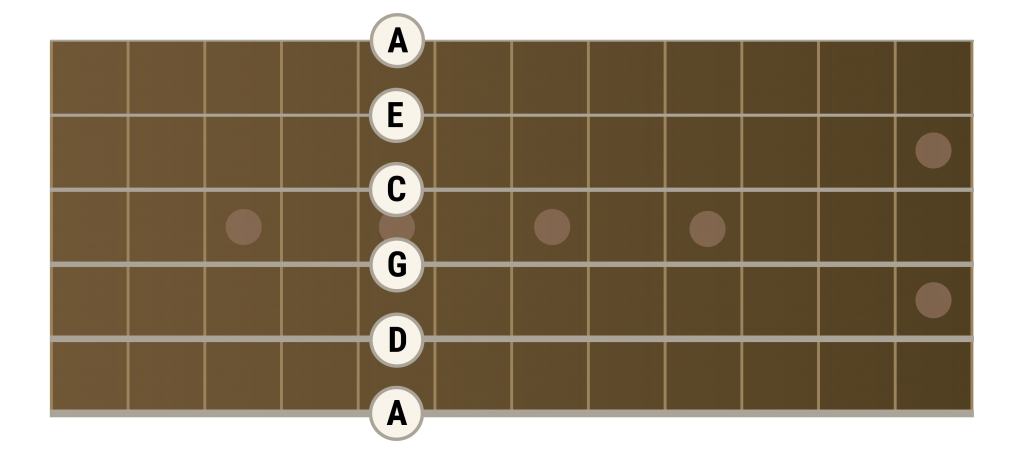
ADVANCED PRACTICE TIP:
- To shorten the thinking process for Exercises 4-7, break down the fretboard into 3 regions. Each region uses only frets with “all natural” notes as a starting point.
- If you are naming notes on frets 1-4, use the open strings as a guide.
- For frets 5-8, the fifth fret is your guide. The fifth fret has all natural notes.
- For frets 9-12, you have two options to use in the following order. First, think backwards from the 12th fret, it is the same note (an octave higher) as your open strings. Next use the 10th fret as a guide for frets 9-12 since it also has “all natural notes.”
- The fret groupings for exercises 4-6 also happen to fall under the fingers quite well when using one finger per fret: first finger on fret 1, 5 or 9.
A FINAL THOUGHT
I have taught this to beginning students and advanced classical players privately, at the University of Kentucky and Wesleyan University. The advanced players mastered note naming in a very short time. More interesting was the progress of the absolute beginners. After practicing the exercises listed above, one per week, for six weeks, most could, without taking their guitar out of its case, they could name notes on any fret. When I asked how much time was spent note naming, the usual response was (paraphrasing here) “for the first few weeks, about 5 or so minutes for each practice session. For the last few exercises, I practiced without the guitar when I was waiting in line or as I was walking to my lesson.”
I hope you too find this exercise helpful.
Happy Practicing, Andrew Leonard


